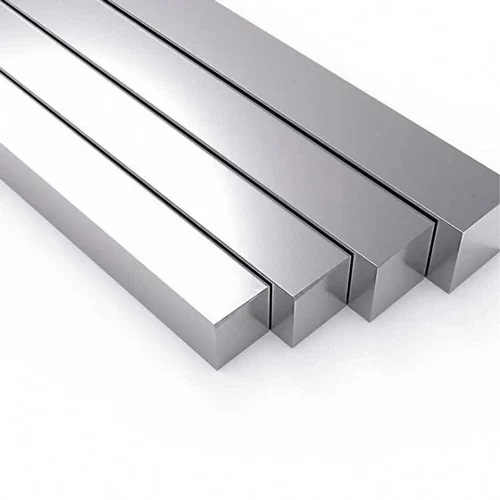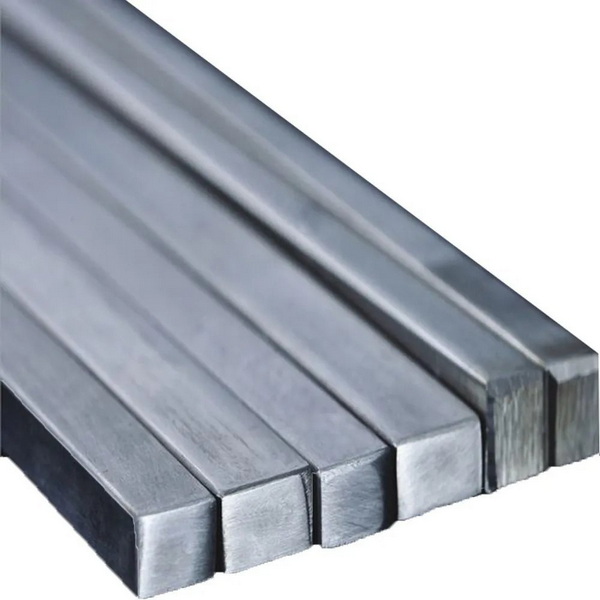English


Views: 222 Author: Tomorrow Publish Time: 2025-07-18 Origin: Site











Content Menu
● Overview of Stainless Steel and Powder Coated Steel
>> Longevity
>> Upfront Material and Fabrication Cost
>> Maintenance and Long-Term Expense
● Aesthetic and Functional Considerations
● FAQ
>> 1. What is the main difference between stainless steel and powder-coated steel?
>> 2. Is stainless steel more expensive than powder coated steel?
>> 3. How long does powder coated steel last compared to stainless steel?
>> 4. Can powder coated steel be repaired if the coating chips?
>> 5. Which material is better for outdoor applications?
When selecting materials for fabrication projects, especially in construction, industrial, or decorative applications, stainless steel and powder coated steel are two prominent options. Both have distinct characteristics influencing durability, maintenance, aesthetics, and cost. This detailed comparison explores these aspects to help you make informed decisions based on your project requirements.

Stainless steel is an alloy distinguished by its chromium content, which forms a natural passive oxide layer on the surface, providing inherent corrosion resistance and mechanical strength. It is widely used in harsh environments such as marine, chemical, and food-grade applications for its longevity and robustness.
Powder coated steel involves applying a dry powder, usually polyester or epoxy-based, which is then baked onto the metal. This creates a decorative and protective coating that resists corrosion and weather effects but lacks the inherent corrosion resistance of stainless steel underneath the coating. It is popular for colorful, budget-friendly projects needing visual appeal.
- Stainless Steel: Thanks to the chromium oxide layer, stainless steel offers excellent corrosion resistance without any additional coatings. This layer is self-healing, meaning minor surface damages do not compromise its protection, making it ideal for harsh or corrosive environments. For example, in coastal areas or chemical plants where moisture and chemicals abound, stainless steel maintains its integrity without rust or staining.
- Powder Coated Steel: The powder coating acts as a barrier against moisture and chemicals, preventing rust as long as it remains intact. However, if the coating chips or scratches, the exposed steel beneath can corrode rapidly. Thus, corrosion resistance is highly dependent on the integrity of the coating. In areas subject to mechanical wear, abrasion, or impact, the coating might degrade over time, increasing maintenance and repair needs.
- Stainless Steel: Exhibits very high strength and hardness, capable of withstanding significant loads, impacts, and wear, making it suitable for demanding structural and industrial uses. The alloy can be heat-treated or cold-worked to enhance these properties depending on the grade, allowing flexibility for various engineering requirements.
- Powder Coated Steel: The base steel offers reasonable strength that can vary by grade but typically does not match stainless steel. The coating contributes an extra layer of protection but doesn't enhance the metal's intrinsic hardness. For load-bearing or safety-critical applications, powder coated steel may require thicker or higher-grade substrates, increasing costs.
- Stainless Steel: Lifespan can exceed 100 years, maintaining structural integrity and appearance with minimal maintenance. This long service life is a key factor in choosing stainless steel for infrastructure, public works, and long-term installations.
- Powder Coated Steel: Generally lasts between 15 to 20 years under normal conditions, but the lifespan shortens if the coating deteriorates or for applications in tough environments such as industrial fumes, heavy rain, or UV exposure. Repeated recoating or repairs may be needed to reach or extend the lifespan.
- Powder Coated Steel: Significantly more affordable upfront due to less costly base materials and simpler processing. The powder coating process is relatively quick and cost-effective, making this option attractive for large projects with budget constraints. The availability of many steel grades allows flexible budget management.
- Stainless Steel: Involves higher material costs because of elements like chromium and nickel, plus more complex fabrication processes. Its initial investment is considerably higher than powder-coated steel. Fabrication techniques such as welding or bending stainless steel also require skilled labor and specialized equipment, which drives costs up.
- Powder Coated Steel: Requires periodic inspections and potential recoating if the finish is damaged, which adds recurring maintenance expenses. Neglecting maintenance can result in corrosion and structural failure, leading to costly repairs or premature replacements that could surpass initial savings.
- Stainless Steel: Minimal maintenance is needed, mostly occasional cleaning to remove dirt and contaminants. The extended service life means less frequent replacements, which can offset the higher initial expenditure over time, especially in corrosive or demanding environments. Stainless steel's resilience ensures stable performance with lower lifecycle costs.

- Powder Coated Steel: Offers a vast range of vibrant colors and textures, allowing customization to any design requirement. Powder coating can achieve matte, glossy, or textured finishes, ideal for decorative elements in urban architecture, furniture, signage, and fencing. The capacity for instant color matching enhances design flexibility.
- Stainless Steel: Characterized by a sleek, modern metallic luster, with options like polished, brushed, or mirror finishes. The color and finish remain consistent for decades, presenting a timeless, elegant appearance, but offer less variation compared to powder coating. Stainless steel complements industrial, minimalist, and high-end aesthetics.
- Powder Coated Steel: Typically lighter due to the base steel grade and the thin coating layer. This reduced weight can reduce shipping and handling costs. It suits applications where weight saving is an advantage, such as portable structures and metal furniture.
- Stainless Steel: Higher density means heavier, which can be advantageous for stability and longevity but may raise transportation and fabrication costs. The added weight can be beneficial in resisting movement during strong winds or vibrations in structural uses.
- Powder Coated Steel: The coating process is generally solvent-free, making it more environmentally friendly than liquid paints. Moreover, the powder overspray in manufacturing can often be recycled, minimizing waste. However, powder-coated steel's shorter lifespan and potential need for recoating can mean more frequent material turnover and increased environmental impact over the long term.
- Stainless Steel: Its high durability and recyclability contribute to lower environmental impacts over the product life cycle despite higher initial production energy costs. Stainless steel is one of the most recycled materials globally, retaining most of its properties even after recycling, making it attractive for sustainable projects.
| Criteria | Powder Coated Steel | Stainless Steel |
|---|---|---|
| Initial Budget | Lower cost preferred | Higher upfront budget available |
| Project Lifespan Required | Medium-term, 15-20 years | Long-term, 50+ years |
| Environmental Exposure | Moderate, controlled or indoor use | Severe, harsh, or chemical exposure |
| Aesthetic Variety | Wide color/texture options | Classic metallic finishes |
| Maintenance Capability | Willingness to do recoating | Minimal maintenance desired |
| Weight Considerations | Lighter, reduces transport costs | Heavier, beneficial for stability |
| Environmental Considerations | Lower initial impact, more frequent renewals | Higher initial impact, very recyclable and sustainable |
The choice between stainless steel fabrication and powder coated steel centers on balancing durability, appearance, maintenance, and budget. If your project demands superior corrosion resistance and endurance with low upkeep, stainless steel, despite its higher initial cost, is the more cost-efficient option in the long run. Conversely, for applications where color customization and lower upfront costs are priorities, powder coated steel offers a practical and attractive solution. Understanding the distinct properties and lifecycle costs of each material ensures an optimized choice tailored to your specific project needs.

Answer: Stainless steel inherently resists corrosion due to its chromium oxide layer and does not require a protective coating. Powder-coated steel relies on a painted powder coating to guard against corrosion, which can fail if damaged.
Answer: Yes, stainless steel typically costs significantly more initially due to its alloy composition and fabrication processes but often results in lower lifetime costs due to its durability and minimal maintenance.
Answer: Powder coated steel usually lasts about 15-20 years under typical conditions, while stainless steel can last upwards of 100 years with proper care.
Answer: Yes, chipped areas can be repaired by sanding and recoating, but maintaining the coating's integrity is essential to prevent rust and prolong lifespan.
Answer: Stainless steel is generally better for severe outdoor environments due to its inherent corrosion resistance. Powder coated steel can be used outdoors but requires careful maintenance and is better suited for moderate climates.
Welding Vs Stainless Steel Fabrication: Understanding The Manufacturing Process Differences
Stainless Steel Fabrication Vs Powder Coated Steel: Durability And Cost Comparison
CNC Machining Vs Stainless Steel Fabrication: Pros And Cons for Industrial Use
Stainless Steel Fabrication Vs Carbon Steel Fabrication: Key Differences Explained
Stainless Steel Fabrication Vs Aluminum Fabrication: Which Is Right for Your Project?
Stainless Steel Grades 201 Vs 304: Cost Vs Performance Breakdown
316L Vs 316 Stainless Steel Grades: Which Is Better for Corrosion Resistance?
Comparing Austenitic Vs Martensitic Stainless Steel Grades: What You Need To Know?
Stainless Steel 430 Vs 304: Key Differences Explained for Manufacturers
304 Vs 316 Stainless Steel Grades: Which One Suits Your Project Best?
